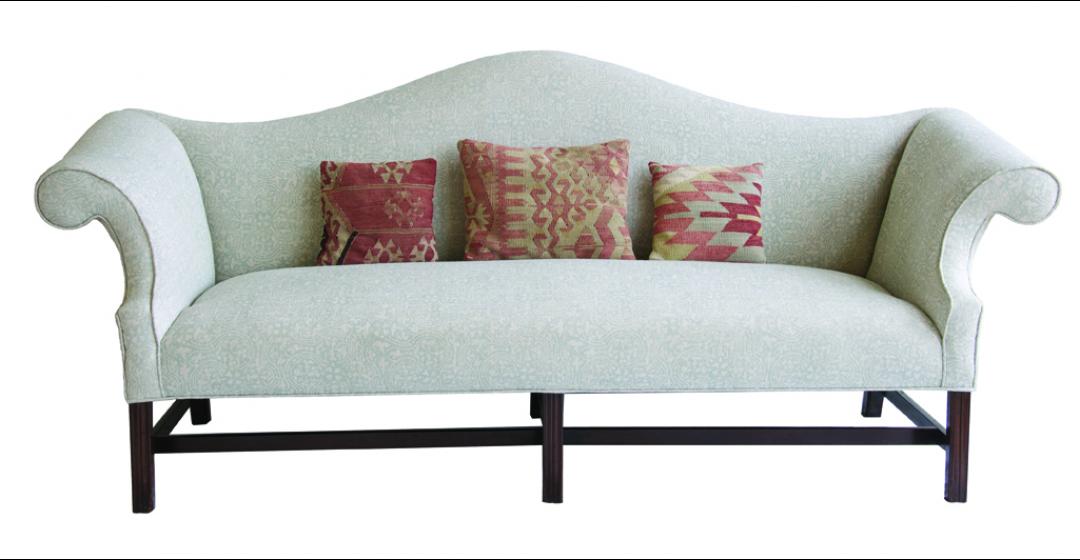In the age of “reality” shows like Antiques Roadshow and Pawn Stars, when appraisers are minor celebrities and every grandmother’s attic seems to contain at least one semi-precious vase or imposter impressionist, it often appears as if determining the worth of a thing – any thing – takes little more than a quick once-over by the right person. But what we don’t see on television, says Nancy Whipple of Edgartown, is that behind every show host making grand pronouncements about a piece’s value (or lack thereof) is a bank of computers. Off camera, producers and trained appraisers have spent untold hours researching online and in professional publications.
“People have these glorious notions of what it means to be an appraiser,” she says, “but it can be a tedious job.”
Which isn’t to say she doesn’t love it. For Whipple, who first came to the Island on her honeymoon in 1971, helping people discover the hidden truth about their possessions – or in some cases helping them locate and purchase the perfect object for their home – is a calling perfectly suited to her lifelong interest in the intersection of history, art, and function. It’s that same passion that led her in 2003 to found the Island’s only accredited antiques appraisal business, Goldfinch Appraisals. “It’s a marvelous job if you love old things,” she says.
The first step in the appraisal process is what Whipple calls a “walk-through” to decide if the antiques fall within her area of expertise. She is a generalist, but specializes in American furniture and decorative arts. Another consideration is her schedule, since the work often requires many hours of painstaking research. Very often the appraisal is for inheritance tax or insurance purposes, and larger estates might be assigned piecemeal to different specialists nearby.
Once she’s decided to take on a client, the creation of a “narrative” begins. “I get in there and take photos of everything,” she says. But she needs more than the images to do her work. “The less glamorous part of the job is the time you spend on your hands and knees, to feel the underside of a table, to touch the glass.” American Brilliant, a turn-of-the-century cut glass much loved by collectors, will usually be worth more than satin glass from the same period. The difference between the two can’t always be seen in a photograph, but it can be felt – that is, so long as you know what to feel for.
Connoisseurship, or the ability to pass judgment on an antique’s craftsmanship and authenticity, is what enables appraisers like Whipple to decide the value of a piece. “You’re like a detective,” she says. Peering beneath a wooden table, she might notice a lighter color in the wood, revealing a recent, ill-advised refurbishment. While it may seem wise to keep that antique chest in working order, by switching out the hardware or sanding off a layer of old, chipped finish, you may be polishing off the value, as well. “Sometimes I’ll see antiques that have been so refined and modified that they’ve lost what was most interesting about them,” she says.
Occasionally, Whipple comes across pieces that have been altered in order to be functional for modern times. “A bed in the old days wasn’t a standard size queen or king,” she says. “So they have to be adulterated.” Whipple remembers one antique bed she was particularly impressed by, until she discovered that “the only original thing about it was the four posts!”
Once she has learned all she can from a piece in person, Whipple – an alumnus of the Rhode Island School of Design’s Appraisal Studies program – hits the books. She subscribes to a number of online databases, but often finds herself coming back to the library of classics she has put together over the years. “I look for three comparable sales,” she says, in order to establish what a piece might sell for in today’s ever-fluctuating market.
After years of walk-throughs and consultations, she has seen some stunning antiques, but the memories Whipple cherishes most aren’t necessarily of the grandest estates. “I remember going to a little house in Chilmark on the water. There was birdseed on the floor; you could smell the popcorn and root beer. There was a puzzle on a card table that was still being worked on,” she says. “Were there also antiques that were worth something? Yes. But you could tell the true beauty of the house was the vista, and the relaxed lifestyle.”
A detective, a storyteller, and a fervent appreciator of functional art, for Whipple owning antiques is first and foremost about the joy that living with them brings. After years of experience and study, she has one piece of advice to anyone in the market for a new piece of history.
“If you love it, get it.”
For more, visit goldfinchappraisals.com.




 1 comment
1 comment
Comments (1)